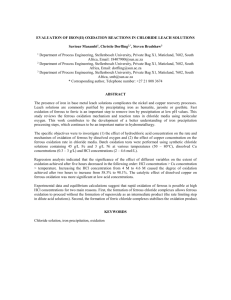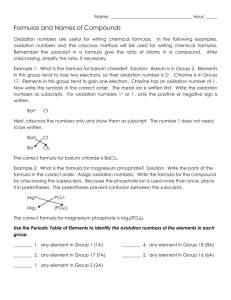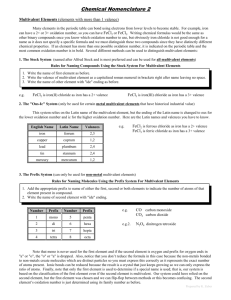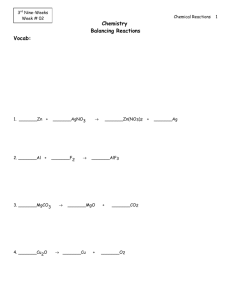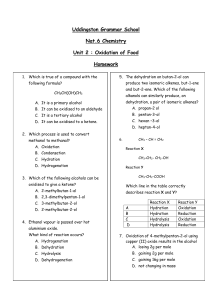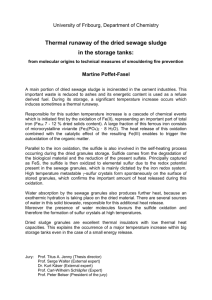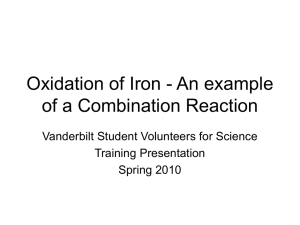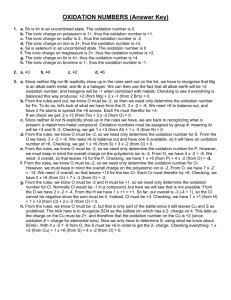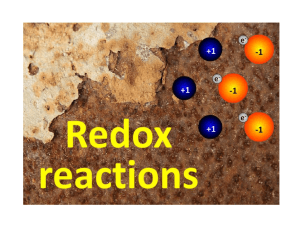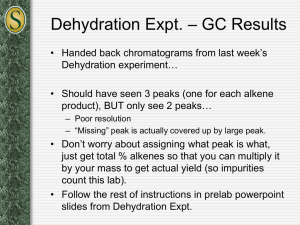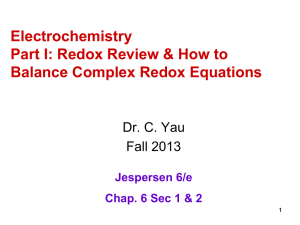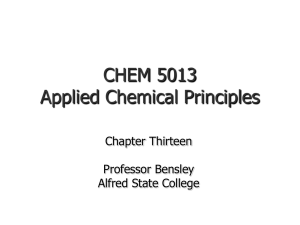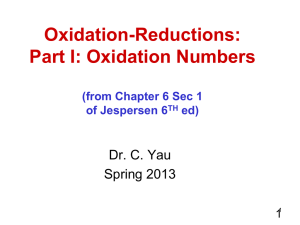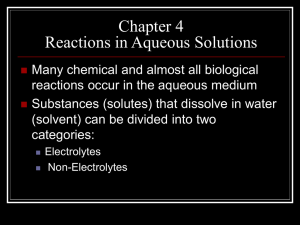Naming and Formula Writing
advertisement
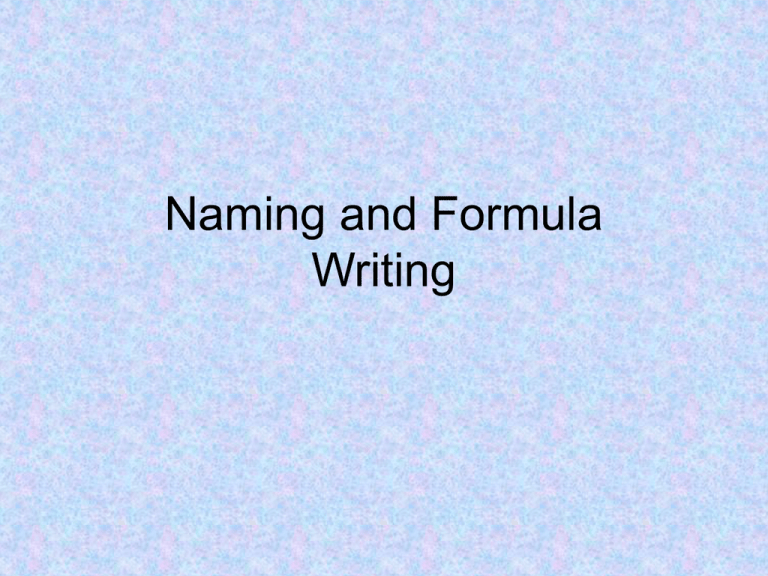
Naming and Formula Writing • “The sum of the oxidation numbers must equal zero.” • You need to learn the majority of the symbols and charges on the oxidation number sheet • Naming: The basics • For those elements and ions whose oxidation numbers that do not vary, simply name the positive ion and then the negative one and You are done. • Example NaCl is Sodium Chloride. • Traditional (old) system: • Is used with those metallic elements that can have more than one oxidation number. That would be most of the “d” block metals. • FeCl2 is Ferrous Chloride Use the ion whose oxidation number does not change to determine which form of iron was used. Since chlorine is always a negative one and there are two chlorine atoms in the formula, the iron must be the plus two variety because the sum of the oxidation numbers must equal zero. This form of iron is called Ferrous thus the name is Ferrous Chloride. • Stock System: • Is used with the same elements as the tradition system, and is easier to use when going from name to formula. In this system • FeCl2 would be Iron II Chloride • The oxidation number of iron is determined the same as above however in this system a roman numeral is used to denote the Oxidation number of the metal instead of the “ic” or “ous” ending. Do not use roman numerals with elements who’s oxidation numbers don’t vary. • Binary Naming: • Is used with binary compounds (containing only two elements) • Both of whose oxidation numbers can vary. That makes determining the oxidation numbers of each difficult. • There are five simple steps to this system. • • • • • • As2O5 Is Diarsenic pentoxide 1. Prefix for the number of atoms of the first element. In is example its “Di” (never use the prefix mono For the first element.) It is considered redundant. 2. The full name of the first element “arsenic” 3. Prefix for the number of the atoms of the second element “pent” (There must be a prefix before the second element.) • 4. The root of the name of the second element. “ox” • 5. Add the ending “ide” and it’s done • Di arsenic pent ox ide The prefixes • • • • • One Two Three Four Five = mono = di = tri = tetra = penta • • • • • Six = hexa Seven = hepta Eight = octa Nine = nona Ten = deca • Formula writing is the reverse: • • • Calcium Nitrate is Ca (NO3)2 Ca is a +2 and NO3 is a -1 so two NO3 groups are needed to make the sum of the oxidation numbers equal zero. • To show that put the NO3 group in parenthesis and add the subscript 2 • I recommend that you write in the charges when you write formulas it will help you learn the charges and prevent careless • mistakes. • Ca+2(NO3-1)2 • Ca+2(NO3-1)2 • Use the crises-cross method to determine the subscript numbers. It works most of the time, but always check for the common denominator. • Page 233 Chemistry • Prentice Hall The old system • Ferric Sulfate With the old system you have to know that Ferric is Fe +3 and that sulfate is SO4 -2 in order to start. So you need to know the oxidation sheet. Again the oxidation numbers must equal zero. To do that the common denominator of 6 is required. Again crises-cross • 2 x 3 = 6 and 3 x 2 =6 • Fe+32(SO4-2)3 Stock system • Iron III Sulfate is the same as above except that you are told in the name that iron is a + 3 so you did not have memorize that detail. • Fe+32(SO4-2)3 • The roman numeral III is the + 3 by the iron. Binary System • • • • Dinitrogen Trioxide Just write down what the name says. Two nitrogen and three oxygen N 2O 3 Naming acids • Binary acids – two elements , Hydrogen and a non metal. HCl = Hydro Chlor ic HF = Hydro flor ic acid HBr = hydro brom ic acid HI = hydro iod ic acid acid Ternary acids • You have to know the name and formula of the “root” acid to use this system. • Example chloric is HClO3 From there you use suffixes and prefixes to indicate the amount of oxygen in the formula • • • • • Per chloric 1 more O than root acid HClO4 Root acid chloric HClO3 1 less O than root chlorous HClO2 1 less O than “ous” is hypo --- ous Hypochlorous acid HClO Root acids • • • • • Chloric acid Sulfuric acid Nitric acid Phosphoric Carbonic acid HCLO3 HSO4 HNO3 H2PO4 H2CO3
